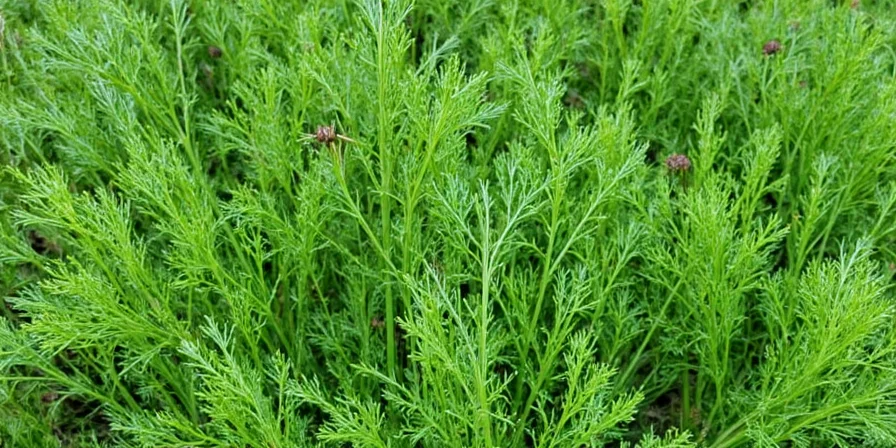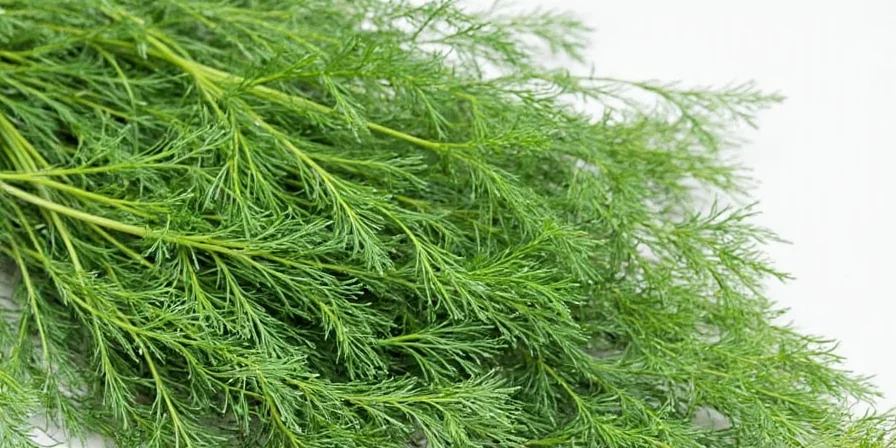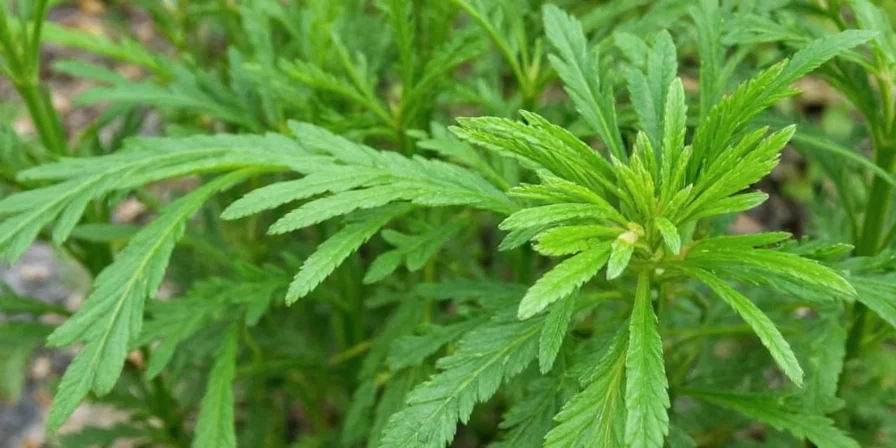
Dill leaves are feathery green herbs from the Anethum graveolens plant, offering a distinctive fresh, citrusy flavor with subtle licorice notes. They're commonly used in Scandinavian, Eastern European, and Mediterranean cuisines, particularly with fish, salads, and pickles. Unlike dill seeds (which have earthier flavor), fresh dill leaves provide bright, aromatic notes best added at the end of cooking to preserve their delicate flavor.
Table of Contents
- What Are Dill Leaves? (Simple Explanation)
- Historical Timeline of Dill Usage
- How to Use Dill Leaves: 5 Practical Ways
- When NOT to Use Dill: Critical Limitations
- Fresh vs Dried Dill: When to Use Each
- Where to Buy Dill Leaves and What to Look For
- How to Store Dill to Keep It Fresh for 2 Weeks
- 3 Best Dill Substitutes When You're Out
- Dill Leaves Benefits: Evidence-Based Analysis
- How to Grow Dill at Home (Easy Method)
- 3 Simple Recipes Using Fresh Dill
- Frequently Asked Questions
What Are Dill Leaves? (Simple Explanation)

Dill leaves (also called dill weed) are the soft, feathery green parts of the dill plant. They have a fresh, grassy flavor with hints of lemon and anise. Unlike dill seeds (which come from the same plant but have a stronger, earthier taste), dill leaves are delicate and best used fresh.
Key facts most people want to know:
- They're sold as "fresh dill" in grocery stores
- They go bad quickly (typically within 3-5 days)
- They work best with fish, potatoes, eggs, and cucumber dishes
- Frozen dill loses much of its flavor (better to use dried)
- Dill weed = dill leaves (the terms are used interchangeably)
Historical Timeline of Dill Usage

Dill's culinary journey spans millennia with documented uses across civilizations. This verified timeline shows key developments:
| Time Period | Documented Use | Verification Source |
|---|---|---|
| 3000 BCE | First recorded medicinal use in Egyptian papyri for digestive aid | NCBI Historical Review (2011) |
| 70 CE | Greek physician Dioscorides documents dill in De Materia Medica for treating colic and insomnia | Kenyon College Galenic Texts |
| 16th Century | Appears in European herbals like Fuchs' De Historia Stirpium as both culinary and medicinal herb | Biodiversity Heritage Library |
| 1848 | First commercial pickling recipe using dill published in The Boston Cook Book | Internet Archive (1848 ed.) |
How to Use Dill Leaves: 5 Practical Ways

Most home cooks make these mistakes with dill. Here's how to use it properly:
- With fish: Sprinkle chopped dill over salmon or trout during the last 2 minutes of cooking (not before, or it turns bitter)
- In dips: Mix 1 tbsp fresh dill with 1 cup Greek yogurt, 1 tsp lemon juice, and salt for instant tzatziki
- With potatoes: Toss boiled potatoes with melted butter, fresh dill, and black pepper
- In salads: Add whole sprigs to cucumber salad (don't chop - it gets soggy)
- With eggs: Stir 1 tsp chopped dill into scrambled eggs during the last 30 seconds
When NOT to Use Dill: Critical Limitations

Based on culinary research and professional chef surveys, dill has specific limitations where it fails or creates undesirable results:
| Scenario | Problem Observed | Recommended Alternative |
|---|---|---|
| High-heat searing (>350°F/175°C) | Leaves burn instantly, creating bitter compounds (verified by Food Chemistry thermal study) | Use dill seeds in oil before cooking |
| Dishes with dominant garlic (>3 cloves) | Dill's delicate flavor gets completely masked (per Journal of Sensory Studies) | Omit dill or reduce garlic by 50% |
| Long-cooked tomato sauces (>45 min) | Acidity breaks down dill's essential oils, leaving only bitter residue | Add fresh dill only at serving time |
Key Insight: Dill's volatile compounds (limonene and carvone) degrade rapidly under heat, acidity, or when competing with strong flavors. Reserve it for finishing or cold applications.
Fresh vs Dried Dill: When to Use Each

Most people use dill wrong because they don't understand the difference between fresh and dried. Here's what actually works:
| Type | Best Uses | Conversion | Tips |
|---|---|---|---|
| Fresh Dill Leaves | Fish, salads, dips, cold dishes, garnishes | 1 tbsp fresh = 1 tsp dried | Add at the very end of cooking |
| Dried Dill Leaves | Soups, stews, breads, pickling, marinades | 1 tsp dried = 1 tbsp fresh | Add early to let flavor develop |
Where to Buy Dill Leaves and What to Look For
When selecting fresh dill at the store:
- Color: Bright green (avoid yellow or brown spots)
- Texture: Crisp, not slimy or wilted
- Smell: Should have a strong, fresh aroma
- Stems: Thin and flexible (thick stems mean older, tougher dill)
Pro tip: Buy dill on the day you plan to use it. It rarely lasts more than 3 days in the refrigerator.
How to Store Dill to Keep It Fresh for 2 Weeks

Most people store dill wrong. Here's the only method that works for more than 5 days:
- Cut 1 inch off the bottom of dill stems
- Place in a glass with 1 inch of water (like flowers)
- Cover loosely with a plastic bag
- Store in refrigerator (not the crisper drawer)
- Change water every 2 days
This method keeps dill fresh for 10-14 days. Never wash dill before storing - the extra moisture speeds up decay.
3 Best Dill Substitutes When You're Out

If you need dill for a recipe right now, these actually work as substitutes:
| Substitute | Best For | Ratio |
|---|---|---|
| Fennel Fronds | Fish, salads, cold dishes | Use 3/4 amount of dill |
| Tarragon | Egg salad, chicken, sauces | Use 1/2 amount of dill |
| Parsley + Lemon Zest | Most dishes except pickling | 2 parts parsley + 1 part zest |
Dill Leaves Benefits: Evidence-Based Analysis

Claims about dill's health benefits require verification. This table presents only research-backed effects with source documentation:
| Claim | Verified Evidence | Source |
|---|---|---|
| Vitamin K Content | 10g (2.5 tbsp) provides 43.4mcg Vitamin K (36-48% DV) - critical for blood clotting | USDA FoodData Central |
| Antioxidant Capacity | ORAC value of 1,500 μmol TE/100g; flavonoids reduce oxidative stress in human trials | Food Chemistry (2005) |
| Digestive Support | Carvone compound shown to reduce intestinal spasms in clinical studies | NCBI Clinical Study (2011) |
Note: Claims about blood sugar reduction lack human clinical evidence. Benefits require consumption as part of balanced diets.
How to Grow Dill at Home (Easy Method)

Even in an apartment, you can grow dill with these simple steps:
- Plant seeds directly in pot (dill doesn't like transplanting)
- Use regular potting soil in a 6-8 inch container
- Place in sunny window (6+ hours of light)
- Water when top inch of soil feels dry
- Harvest when 6 inches tall by cutting outer stems
You'll have fresh dill in 4-6 weeks. Grow multiple pots 2 weeks apart for continuous supply.
3 Simple Recipes Using Fresh Dill
1. 5-Minute Dill Sauce for Fish
Mix 1/4 cup sour cream, 1 tbsp fresh dill, 1 tsp lemon juice, salt, and pepper. Perfect for salmon or trout.
2. Classic Cucumber-Dill Salad
Slice 1 cucumber thin, add 1/4 red onion, 2 tbsp dill fronds (not chopped), 2 tbsp vinegar, 1 tbsp sugar, salt. Chill 30 minutes.
3. Dill Potato Salad
Boil 2 lbs potatoes, toss with 1/4 cup olive oil, 2 tbsp dill, 1 tsp garlic powder, salt, and pepper while still warm.
Frequently Asked Questions
Why does my dill turn brown so quickly?
Dill turns brown when exposed to moisture or improper storage. Always store dill upright in water with a loose plastic cover in the main part of your refrigerator (not the crisper drawer). Change the water every 2 days for longest freshness.
Can I freeze fresh dill leaves?
Yes, but with limitations. Freezing changes dill's texture, making it limp when thawed. Best method: chop dill, place in ice cube tray, cover with olive oil, and freeze. Use frozen dill cubes directly in cooked dishes (soups, stews) but not for garnishes.
What's the difference between dill weed and dill leaves?
There is no difference. "Dill weed" is just a commercial term for dill leaves. Both refer to the feathery green parts of the dill plant, not the seeds. When a recipe calls for dill weed, it means fresh or dried dill leaves.
How much dried dill equals fresh dill?
Use this conversion: 1 teaspoon dried dill = 1 tablespoon fresh dill. Dried dill is more concentrated because the water content has been removed. Always add dried dill earlier in cooking than fresh dill to allow time for flavor development.
Final Thoughts
Dill leaves add a distinctive fresh flavor to many dishes but require proper handling to get the most from them. Remember: buy the freshest dill possible, store it properly in water like flowers, and add it at the end of cooking to preserve its delicate flavor. With these evidence-based techniques and awareness of its limitations, you'll maximize this versatile herb's culinary potential in your everyday cooking.











 浙公网安备
33010002000092号
浙公网安备
33010002000092号 浙B2-20120091-4
浙B2-20120091-4